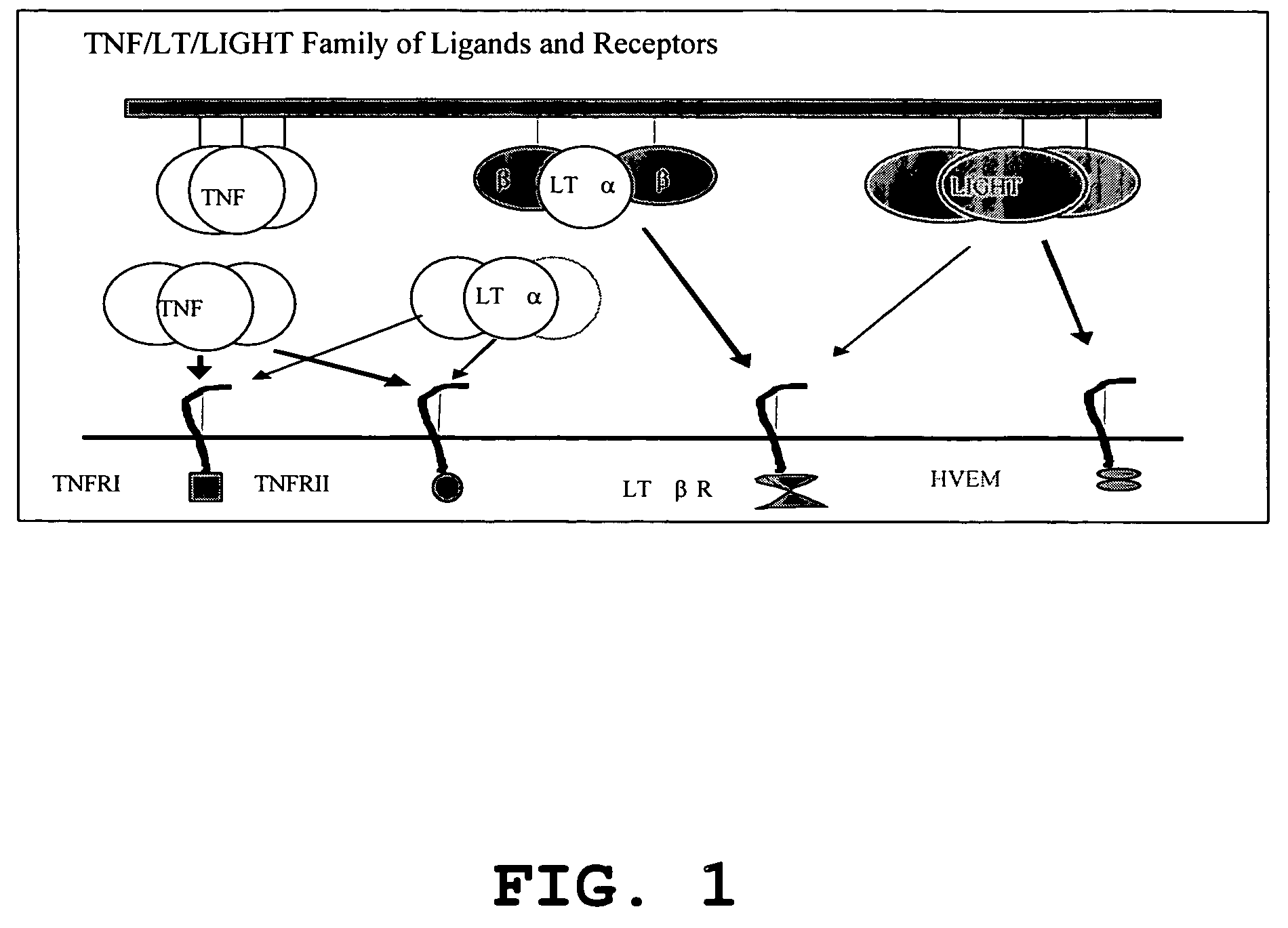Increased T-cell tumor infiltration by mutant LIGHT
a technology of mutant light and tumors, applied in the direction of viruses, peptide/protein ingredients, fusion polypeptides, etc., can solve the problems of non-mutant light not being expressed on the surface, not inducing effective anti-tumor activity, etc., and achieve the effect of reducing tumor volum
- Summary
- Abstract
- Description
- Claims
- Application Information
AI Technical Summary
Benefits of technology
Problems solved by technology
Method used
Image
Examples
Embodiment Construction
[0027]Expression of LIGHTm on tumor cells promotes tumor rejection. The tumor Ag104A and its derivatives were used as one of tumor models. Ag104A was originally derived from spontaneous osteosarcoma in C3H (H-2k) mice and even very low dose of Ag104A (104) can grow aggressively in C3H or B6C3F1 mice with very little infilatrates. When strong antigen, Ld, was introduced into a tumor, the tumor remained resistant to immune recognition, suggesting a possible strong tumor barrier. Ag104Ld tumor transfected retrovirally with mutated LIGHTm stably expresses LIGHTm on its surface.
[0028]LIGHTm-Ag104Ld tumor was first inoculated into B6C3F1 mice for 2 weeks, then 1×106 2C T cells were transferred into the established tumor bearing mice. Impressively, all established LIGHTm-Ag104Ld tumors (10 / 10) were rejected one week after the transfer of 2C T cells while no Ag104Ld tumors (0 / 10) were rejected. Even though B7-1 is a strong costimulatory molecule for inducing T cell activation and expansion,...
PUM
| Property | Measurement | Unit |
|---|---|---|
| thick | aaaaa | aaaaa |
| concentrations | aaaaa | aaaaa |
| adhesion | aaaaa | aaaaa |
Abstract
Description
Claims
Application Information
 Login to View More
Login to View More - R&D
- Intellectual Property
- Life Sciences
- Materials
- Tech Scout
- Unparalleled Data Quality
- Higher Quality Content
- 60% Fewer Hallucinations
Browse by: Latest US Patents, China's latest patents, Technical Efficacy Thesaurus, Application Domain, Technology Topic, Popular Technical Reports.
© 2025 PatSnap. All rights reserved.Legal|Privacy policy|Modern Slavery Act Transparency Statement|Sitemap|About US| Contact US: help@patsnap.com



